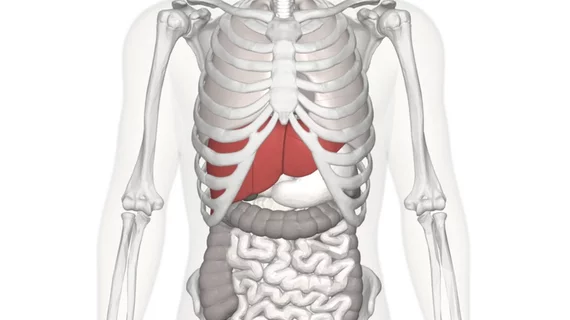Can the LI-RADS Treatment Response algorithm accurately assess HCC?
The 2017 Liver Imaging Reporting and Data System (LI-RADS) included an algorithm to assess hepatocellular carcinoma (HCC) treated with local-regional therapy, but the method was never validated. A team of researchers took on the task, publishing their results April 30 in Radiology.
“Because the imaging assessment of treated HCC lesions is a key determinant of continued eligibility for liver transplantation and need for further therapy, understanding the diagnostic performance of the Treatment Response algorithm for assessing lesion viability is critical to making management decisions,” wrote first author Erin L. Shropshire, MD, from the department of radiology at Duke University Medical Center in Durham, North Carolina, and colleagues.
In the study, the researchers included 45 adults who underwent bland arterial embolization for HCC followed by a liver transplant between 2006 and 2016. Three radiologists analyzed the 63 total lesions using the CT/MRI LI-RADS 2017 Treatment Response algorithm. Lesions were categorized as either completely or incompletely necrotic.
The algorithm’s accuracy for predicting incomplete histopathologic tumor necrosis ranged from 60-65% for the readers, and positive predictive value was 86-96%. For predicting tumor necrosis, the LR-TR Nonviable category was 67-71%, and the negative predictive value was 81-87%.
Of the lesions rated LR-TR Equivocal, 71% were incompletely necrotic, which “suggests that in patients who might benefit from additional local-regional therapies, LR-TR Equivocal lesions may warrant close imaging follow-up or further treatment,” the authors noted.
Interreader association, a central goal for standardized reporting such as LI-RADS, for the LR-TR category was “moderate.”
There are multiple systems in place for standardized measurement and reporting of solid tumor treatment response, including the mRECIST criteria. Although the authors noted more research would be needed to compare mRECIST against LR-TR, the latter does have some notable advantages.
“The LR-TR algorithm is distinct in that it focuses on lesion-level assessments rather than on patient-level assessments,” the researchers concluded. “This is particularly important in the assessment of HCC, because patients may develop multiple lesions over time, necessitating different local-regional therapies for maintenance of transplant eligibility or disease control.
In a related editorial, Debra A. Gervais, MD, of the department of radiology at Massachusetts General Hospital in Boston praised the study for its contribution to the growing literature on LI-RADS.
“LI-RADS self-defines in part as ‘a dynamic document to be expanded and refined as knowledge accrues...,’” Gervais wrote. “Shropshire and colleagues have provided an important contribution to the dynamic and evolving LI-RADS endeavor in evaluating the performance characteristics of the first iteration of a LI-RADS Treatment Response algorithm.”

